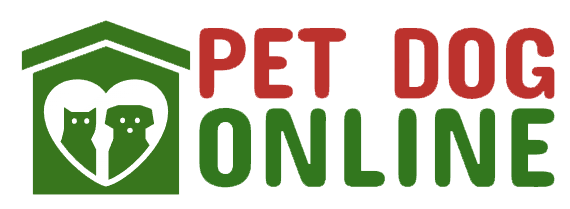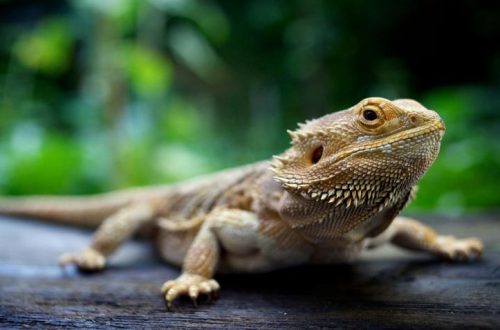
Puppy Development Stages And Growth Chart
We’ve been recently receiving a lot of queries from numerous concerned pet parents on the ideal weight that dogs must have, at various initial ages, and about their growth and development. Bringing a pup home is no less responsibility than being a real parent- sure thing, you’ve heard it before. Now, as a pet parent, it is quite crucial for you to understand the growth process of your pup so as to fix appropriate diets for him and to ensure he’s in a great shape and health.
Here, this article shall answer all your questions on the ideal weight for diverse breeds and related to the growth and development of dogs. Get in touch with us with any further doubts on puppy growth and development here:
- Visit our website www.marshallspetzone.com
- Call us or simply What’s app us on 8106360786
- Write us at [email protected]
- Live chat with our Customer Service Team 24*7 over our site.
- Inbox us on our Facebook page and Instagram
Breaking Down The Puppy Development Process:
Let us break down the development of a puppy i.e., puppy life cycle into shorter phases for helping you understand the same better and easier. Take note though, this information is based on average, more generalized data- actual development pretty much vary from breed to breed. So don’t freak out if your puppy is taking a little longer to cut his first teeth or to get running.

Week 2:
Pups are born deaf and blind in addition to being teeth-less. It is around the 2nd week of their birth that their eyes open- maybe not completely- and develop a primitive sense of hearing. Their legs would gain strength and around 7% of their body mass.
Week 3-4:
3rd and 4th weeks are periods of a series of development in pups. Their senses are largely developed and they become relatively more active, they’ll walk and try to run and wag their tiny tails and attempt to bark. The first set of their frontal teeth and canines will cut in.
Week 6:
It is probably around this period that you’ll bring the pup home (if you are getting one from a breeder). By the 6th week, puppies are really active and can actually run and walk, and can even bark; so make sure you give them sufficient space to burn their energy. They are properly weaned by this period and can start having multiple light, small proportion meals. Teething, chewing on something will become their favorite hobby. You might want to get your waggy baby some chew toys or teething toys- this will help (preventing your pup’s biting) instincts from ruining your home-furnishing! Check out some of the best chew toys.
Month 2 And 3:
By this time, your pup will be gaining some 150-500 grams of weight per week, depending on the breed. He’ll remain active and will be ready for better socialization. They may, however, exhibit fear or hesitation towards unfamiliar things. It is during this period that they can be exposed to house, habit and social training. They would still be chewy, and (training them against biting) is going to be a is going to be a gradual process.
Month 4:
Your pup will lose that ‘little puppy’ look. Medium and large breed’s pups would reach somewhat half of their maximum height. During this stage, you can start taking your pup for short walks. By the end of 4th month, some puppies would start losing their puppy teeth.
Month 6:
Your pup would be developing his adult teeth by now. Again, a lot of chewing; make sure you restock all the chew toys
You can start taking your pup for longer walks, or if the weather allows, for swims too (under supervision). You can tighten the training during this phase. Oh and nothing would be more encouraging than little paw-rewards for obeying you and doing as you train. By the end of this period, the meals can be cut down to two full meals per day.
Month 8:
By 8th month, expect a full 42 member set of adult teeth in your puppy. By this time, dogs start growing confident and independent. They will still need to be kept under training and practice. The small breed dogs would be attaining maturity by this period and medium and large breed dogs would still be growing. Moreover, most male dogs would become fertile by this period.
Month 10-12:
Most small and medium dog breeds, on average, attain maturity during this period. Around this period they’ll be having all their sex hormones flooding unless you have them neutered. So, for many female dogs, having completed their first season, this is the period that they shall be neutered. (Note that the age of attaining maturity extends further in several breeds). Having attained maturity, they can now be made part of relatively vigorous tasks.

Puppy Maturing: Physical Maturity, Mental Maturity, Sexual Maturity
Various breeds attain physical, emotional and sexual maturity at different ages. Let us break this down for you.
Physical Maturity:
Larger breeds will surely be taking longer to attain complete physical maturity- it may take about 15 months to 2 years. The smaller and medium-sized breeds, however, would attain their full height in 10-15 months itself.
When Is A Female Dog Ready To Mate :
In the context of sexual maturity too, smaller breeds mature faster than larger breeds. Typically, males attain full maturity in 10-15 months, varying from breed to breed. Note though, they become fertile at around 6-8 months of age. Female dogs become fertile and come to heat at around 6-10 months of age. Sometimes, it may take over a year for females to attain sexual maturity.
Mental Or Emotional Maturity:
Reaching mental and emotional maturity takes a bit longer though they attain physical and sexual maturity relatively earlier. Even with training, dogs execute that puppyish and silly behavior. It might take about 2 years for that excitement to be replaced with maturity.
Puppy Growth Chart:
Every dog owner wants to assure their puppy is growing just right and is weighing just perfect. Here is the dog weight chart for all the small, medium, large or giant breeds, and also few tips to check yourself if your furry sweetheart is thin or obese.
Please note that the chart given here is an approximate upper limit and lower limit of small, medium, large and giant breeds and is not based on any particular dog breed belonging to the category. Weight range may largely vary according to the breed. For example, Saint Bernard and Rottweiler are both Giant breed dogs. However, while Saint Bernard reaches a maximum weight of about 82 Kgs, Rottweiler may have just the maximum weight of about 60 Kgs.
Similarly, the weight of males and females might vary. At most point of time, the weight of a male dog would be greater than the female of same breed.



How To Check Your Dog Is Overweight Or Underweight?
Just a simple trick to see if your puppy is going fat or is too thin, without having to run to a vet now an then.
For Under weighing Dog: Can you actually see the ribs of your young pup? He’s too thin or underweight, you need to add an extra meal in his diet.
For Over weighing Dog: If you can’t see his ribs, run your fingers over his coat. Can’t feel his ribs? He’s obese or overweight.
Basically, your pup is weighing just right and healthy if:
1. You cannot see his ribs over the coat but can feel it when you touch him- it shows he has that adequate level of fat.
2. Your pup has a waist when you look at him from above.
3. He has a tuck (the slight slope up beneath his tummy) when you look at him from the side.

Some Generally Asked Questions On Puppy Growth And Development:
When Should I Socialize My Puppy?
Pet parents frequently express concern on How to socialize their puppy socializing puppies. ‘When is the best time to socialize puppies/how can i socialize my puppy ?’ is a common question that we get from pup-parents. While different experts might have different views on this, it is fundamentally accepted that the most important period in respect of socialization of puppies is their initial three months period. During this time, they are most open to experiences.
When Do Puppies Start Walking?
On an average, puppies take their first steps by third week. It is by their third and fourth week that their leg strength builds and they start walking.
When Do Puppies Open Their Eyes?
Puppy eyes doesn’t pop open in a day or two; it opens eventually and the process almost consumes 2 weeks. They are completely blind for their first week. It is around their second week that their eyes open completely.
What Affects The Growth Rate Of Puppies?
There are three main factors that influence the growth rate in pups, as given below:
- General health conditions of the puppy
- Neutering
- Diet
Does Neutering Affect The Growth Of A Dog?
Yes, Dog neutering does affect the growth rate of puppies. The dogs that are neutered before attaining complete physical maturity sometimes happen to keep growing for a while, since the process alters sex hormones and the pup ends up lacking the hormones involved in stopping their physical growth. This extra growth cannot be considered to be favorable to them, since it may cause joint issues or other problems.





